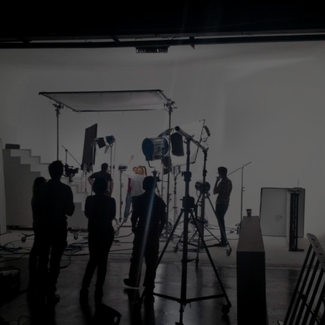
partner content
The role of a creative studio is changing
Creative production studios are a well-established component of all marketing groups. But they’re currently evolving at a speed that the industry’s not witnessed before
15 September 2022
Studios first emerged in a pre-digital, ATL-dominated world as “in-house production” teams, where artworkers and post teams were set up to rationalise the costs and processes associated with scaling campaigns and help agencies stem some of the flow of their clients’ money to the independent market.
Today, contemporary digitally native multi-disciplined teams are rapidly growing both within clients and their agencies, working more closely with creative and data functions and adopting more tech to operate at the speed and scale a digital economy demands.
Client opportunities have also evolved. From “decoupling” savings through industrialising parts of the creative process, to “data, creative and tech” fusions delivering more personalised content.
None of that has really changed the fundamental role of a studio: getting the most value from clients’ creative investment to audiences at scale. But in a maturing digital economy, there are as many frustrating complexities as there are remarkable innovative opportunities for brands and agencies to navigate to work together to achieve this.
Brands need to be able to tell their story not just in ‘more ways’, but in 1000s of ways. And they need to tell those stories in every moment, in pictures, videos and sentences, always with the simplicity to be understood and the modularity to be personalised to an individual audience situation.
That’s where the best studios come in. Investments in the highest levels of brand creativity and the performance of targeted hard-working digital content are interdependent and require the orchestration of a constantly evolving chain of global talents, suppliers, tools and technologies, algorithms, AI engines, and budgets to be managed and connected. A good studio will achieve the right balance between scale and creativity, awareness and saliency, global efficiency and local relevance.
But that’s easier said than done. As with many elements of our industry, networks are able to offer the scale but lose their creative spark (not to mention adding often unnecessary layers to a ‘smooth’ process). And smaller studios can often offer intriguing innovation chops and creative vigour, but lack the global efficiency or salience to truly deliver.
Purely focusing on In-house production capabilities has never excited and inspired creatives and clients. They’re too often lacking the openness and innovative thinking to make the leaps required, leaps that ultimately need to draw on a wider ecosystem of talents – from in market writers to film directors- and technologies and tools that can be curated and connected.
Designing a Studio Ecosystem for the future
OK, so far I’ve posed a lot of challenges, but not that many answers. But having spent the last 18 months at MSQ, speaking to global clients, meeting the world’s most innovative and interesting tech partners and building our own version of a studio from the ground up, I think there are four connected dimensions that need to be balanced in order to help clients get closer to their customers through creativity and content, delivered on a large-but-relevant scale.
Craft. The foundations, as they always should in our industry, start with talent. Multi-disciplinary and multi-locational experts who can face the range of global creative challenges required by contemporary always-on campaigns. That studio talent should be connected with key partners who can provide specialist expertise or culturally relevant insights that can connect with global audiences at a local market level.
Technology. From the essentials of asset and workflow management through to creative automation and DCO platforms that enables scale and effective personalisation. All bases must be covered.
Connectivity. This isn’t just about how the creative and production workflows connect across the studio, client and partner teams and technologies, but how they connect with data process and how they integrate with media and CX activation too.
Innovation. Problem solving the tensions between speed, scale and quality by process hacking and adopting the latest techniques from virtual production engines and studios. Can you remain at the cutting-edge?
When putting the ecosystem in place, the defining quality we’ve looked for in our studio teams is imagination. Without it, managing the complexities of everyday delivery of content, operating at the speed and scale needed across the range of enabling technologies, becomes all the harder to do. Imagination (and an open horizon to work with partners) stops this from becoming all-consuming and helps us focus on the remarkable possibilities that exist.
Imagination has always been in the make-up of creative production talents. Getting to problem solve is the reason we love what we do, and embracing change is where the fun lies. What art worker or post editor would really want to keep moving pixels manually, when a creative technology can take the heavy lifting away and allow them to focus on raising the quality alongside the volume?
If brands need to get closer to customers, they need studios with the capabilities and imagination to help them succeed. The opportunities are there for studios to embrace that. Too often though, the conditions put in place by those in our industry aren’t right. We think it’s time to change that.
Morgan Cox runs MSQ Global Studios






